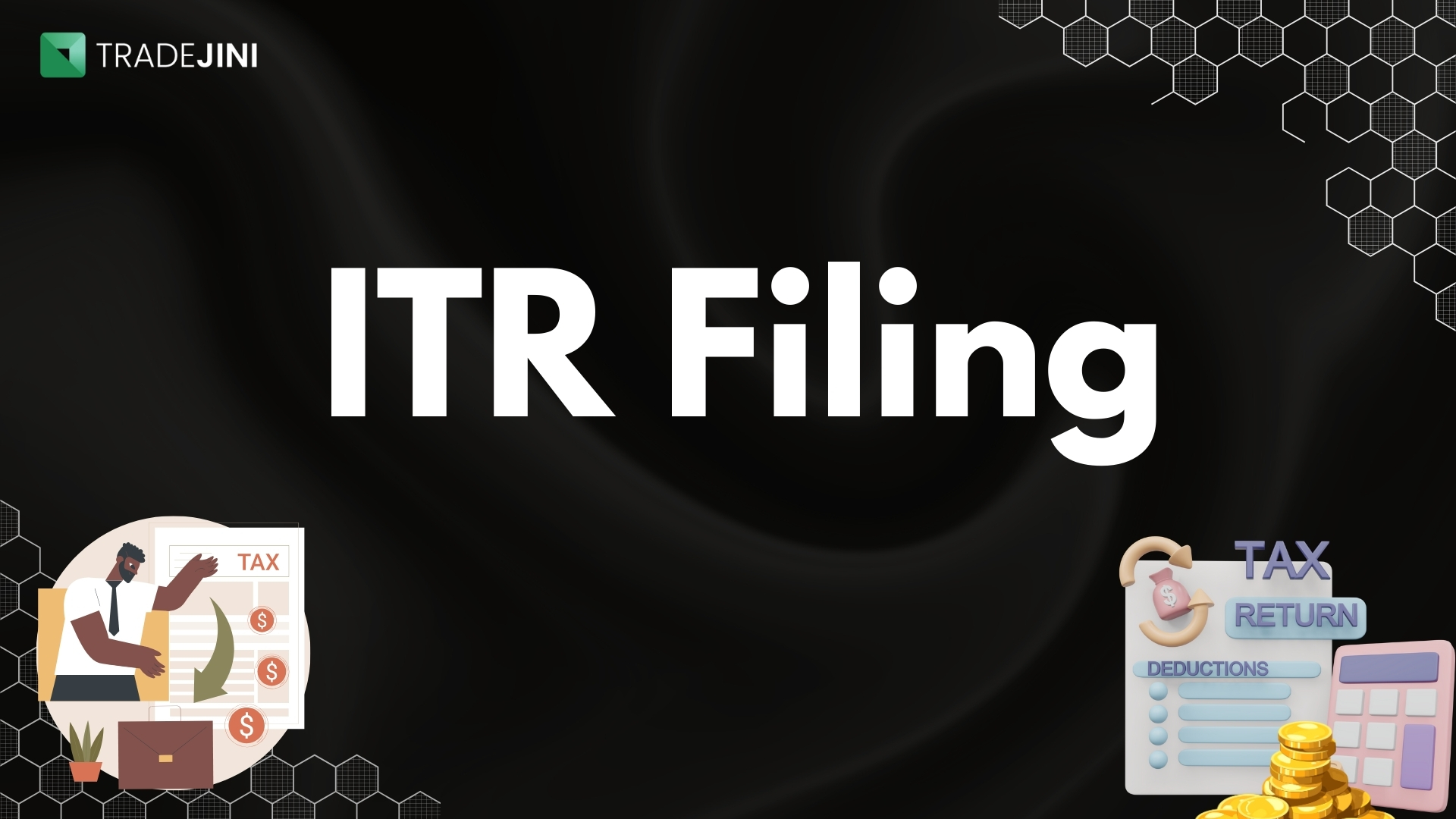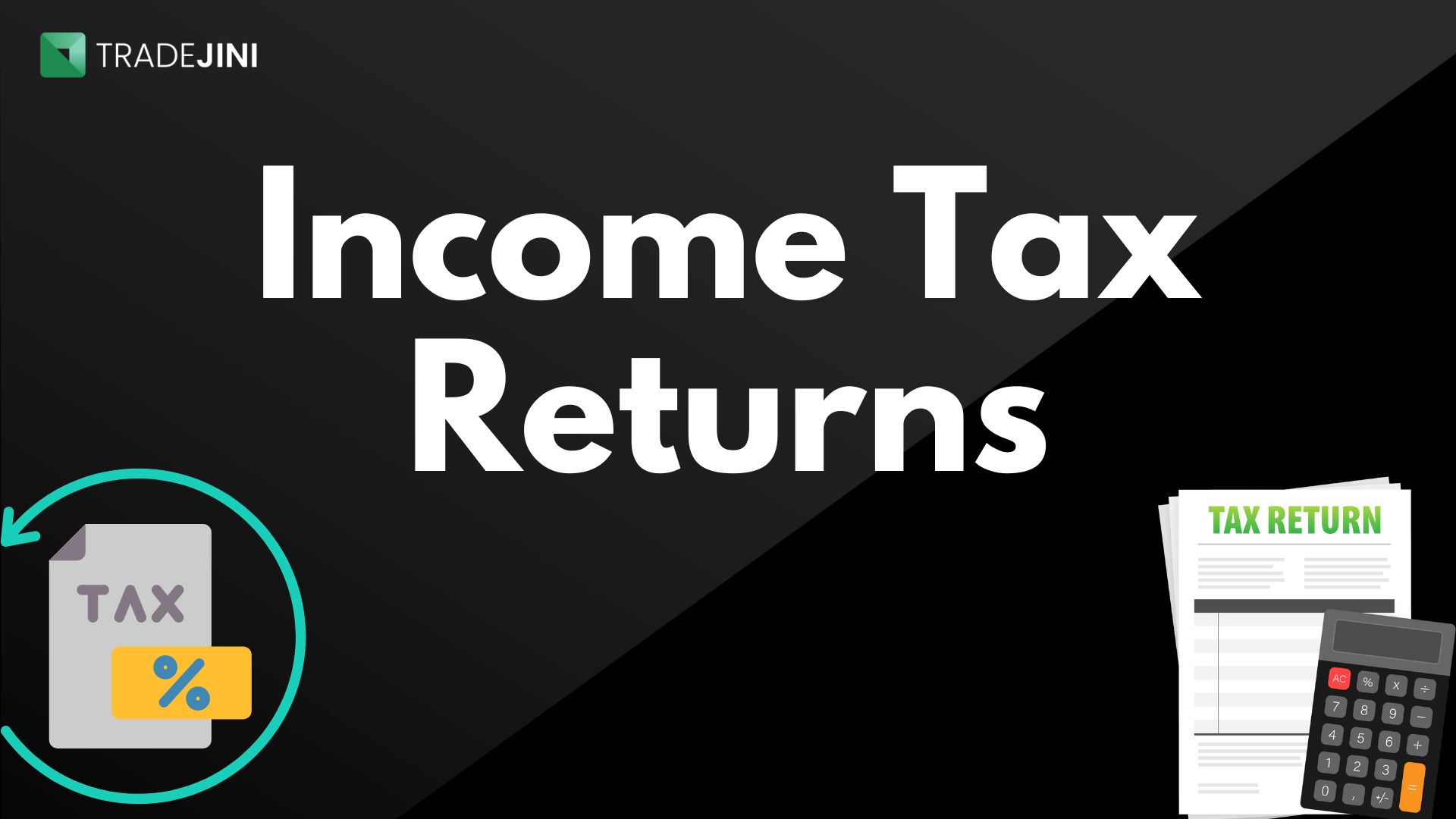As responsible tax-paying citizens of India, we are all obligated to file our Income Tax return forms, every financial year. To file your returns, you must select the most appropriate form based on your profession out of the 7 forms, i.e. ITR-1, ITR-2, ITR-3, ITR-4, ITR-5, ITR-6 & ITR-7 notified by the income tax department.
Table of Contents
ToggleITR-1 (SAHAJ)
The ITR-1 (Sahaj) form is designed for salaried individuals and pensioners with straightforward financial situations. This user-friendly form comes pre-filled with personal details, income information, and financial transaction data to streamline the tax filing process. Taxpayers can quickly complete their returns by verifying the pre-filled data against their Form-16, bank statements, Form 26AS, and the Annual Information Statement (AIS). The entire process can be conveniently completed online.
Eligibility and Ineligibility for Filing ITR-1 for AY 2024-25
Eligibility for Filing ITR-1: Resident Individuals can file ITR-1 if their total income does not exceed ₹50 lakh during the FY, and their income sources include:
- Salary
- One house property
- Family pension income
- Agricultural income (up to ₹5000)
- Other sources like interest from savings accounts, deposits (Bank/Post Office/Cooperative Society), income tax refunds, enhanced compensation, family pensions, and interest income
- Clubbed income from a spouse (excluding Portuguese Civil Code cases) or minor, provided it falls within the specified limits
Non-Eligibility for Filing ITR-1: Individuals cannot file ITR-1 if they:
- Are a Resident Not Ordinarily Resident (RNOR) or Non-Resident Indian (NRI)
- Have a total income exceeding ₹50 lakh
- Have agricultural income exceeding ₹5000
- Have income from lottery, racehorses, legal gambling, etc.
- Have taxable capital gains (short-term and long-term)
- Have invested in unlisted equity shares
- Have income from business or profession
- If you are a Director in a company
- Have tax deductions under section 194N of the Income Tax Act
- Have deferred income tax on ESOP from an eligible start-up
- Own and have income from more than one house property
Excluded Income Types in ITR-1: The following types of income should not be included in ITR-1:
- Profits and gains from business and professions
- Capital gains
- Income from more than one house property
- Income under other sources, such as winnings from the lottery, owning and maintaining race horses, and income taxable at special rates under sections 115BBDA or 115BBE
- Income apportioned under section 5A provisions
Mandatory Employment Information: When filing ITR-1, it is mandatory to define the nature of employment:
- Central Government Employee
- State Government Employee
- Employee of Public Sector Enterprise (Central or State Government)
- Pensioners (CG/SG/PSU/Other)
- Employee of the Private Sector concern
- Not applicable (for family pension income)
Required Documents for Filing ITR-1: While ITRs are annexure-less forms and no documents need to be attached, it is advisable to keep the following documents for reference:
- AIS download
- Form 16
- House rent receipts (if applicable)
- Investment payment and premium receipts (if applicable)
Claiming Deductions: All deductions are available for a claim if the taxpayer opts for the old tax regime instead of the default new tax regime. In the Personal Information section of the return, this can be accomplished by checking the appropriate box.
ITR-2
In India, individuals and Hindu Undivided Families (HUFs) file their taxes using the Income Tax Return Form 2, or ITR-2. It’s ideal for those whose income comes from various sources besides business or professional profits. This includes income from salary, pensions, house properties, capital gains, agriculture exceeding Rs. 5,000, and other sources like lottery winnings. If you have a diversified income portfolio and don’t qualify for the simpler ITR-1 form, then ITR-2 might be the right fit for filing your tax returns accurately and efficiently.
Eligibility and Non-Eligibility for Filing ITR-2 for AY 2024-25
Eligibility for Filing ITR-2: Individuals or Hindu Undivided Families (HUFs) can file ITR-2 if they:
- Are not eligible to file ITR-1 (Sahaj)
- Do not have income from the profit and gains of business or profession, including:
- Interest
- Salary
- Bonus
- Commission or remuneration from a partnership firm
- Have the income of another person, such as a spouse or minor child, be clubbed with their income, provided it falls under the specified categories.
Non-Eligibility for Filing ITR-2: Individuals or HUFs cannot file ITR-2 if their total income includes income from profit and gains from business or profession, including:
- Interest
- Salary
- Bonus
- Commission or remuneration from a partnership firm
Changes in ITR-2 for AY 2024-25: Taxpayers can opt for the new tax regime under Section 115BAC. The option is available only until the due date for filing returns under Section 139(1).
Required Documents for Filing ITR-2:
- Form 16 (for salary income)
- Form 16A (for TDS on fixed deposits or savings account interest)
- Form 26AS (to verify TDS on salary and other sources)
- Rent receipts (for HRA calculation, if applicable)
- Summary or profit/loss statement of capital gain transactions (for capital gains)
- Bank passbook, Fixed Deposit Receipts (FDRs) (for interest income calculation)
- Tenant/local tax payment/interest on borrowed capital details (for rental income calculation)
-
Relevant documents for claiming current year’s or previous year’s losses.
- Documents or proofs for tax-saving deductions under sections 80C, 80D, 80G, and 80GG (e.g., insurance receipts, donation receipts, rent receipts, tuition fees receipts).
Rebate Under Section 87A:
- HUFs or firms cannot claim rebates under section 87A; it is available only to individuals.
- Non-residents cannot claim rebate under section 87A; it is available only to individuals resident in India.
Eligibility and Non-Eligibility for Filing ITR-3 for AY 2024-25
Eligibility for Filing ITR-3: Individuals and Hindu Undivided Families (HUFs) can file ITR-3 if they:
- Have income from profits and gains of business or profession
- Have income as a partner in a firm
- Have income from salary, pension, house property, or other sources (including lottery winnings and racehorses)
Non-Eligibility for Filing ITR-3: Individuals and HUFs cannot file ITR-3 if they are eligible to file ITR-1, ITR-2, or ITR-4.
Changes in ITR-3 for AY 2024-25: Taxpayers can opt for the new tax regime under Section 115BAC. This option is available only until the due date for filing returns under Section 139(1).
Required Documents for Filing ITR-3:
- Form 16 (for salary income)
- Form 16A (for TDS on fixed deposits or savings account interest)
- Form 26AS (to verify TDS on salary and other sources)
- Profit and loss statement, balance sheet, and audit reports (for business/professional income)
- Bank statements, fixed deposit receipts (for interest income calculation)
- Rent receipts (for HRA calculation, if applicable)
- Details of capital gains transactions, including summary or profit/loss statement (for capital gains)
- Tenant/local tax payment/interest on borrowed capital details (for rental income calculation)
- Relevant documents for claiming current year’s or previous year’s losses
- Documents or proofs for tax-saving deductions under sections 80C, 80D, 80G, and 80GG (e.g., insurance receipts, donation receipts, rent receipts, tuition fees receipts).
Rebate Under Section 87A:
- HUFs or firms cannot claim rebates under section 87A; it is available only to individuals.
- Non-residents cannot claim rebate under section 87A; it is available only to individuals resident in India.
ITR-3
ITR-3 is suitable for individuals and Hindu Undivided Families (HUFs) with income from business or professional activities. This ITR form caters to those who run a proprietorship, practice a profession (like doctors, lawyers, architects), or have income from other sources like house property, capital gains, or agriculture exceeding Rs. 5,000. If your income profile includes business or professional earnings, then ITR-3 might be the perfect fit to ensure accurate and comprehensive tax filing.
Eligibility and Non-Eligibility for Filing ITR-3 for AY 2024-25
Eligibility for Filing ITR-3: Individuals and Hindu Undivided Families (HUFs) can file ITR-3 if they:
- Have income from profits and gains of business or profession
- Have income as a partner in a firm
- Have income from salary, pension, house property, or other sources (including lottery winnings and racehorses)
Non-Eligibility for Filing ITR-3: Individuals and HUFs cannot file ITR-3 if they are eligible to file ITR-1, ITR-2, or ITR-4.
Changes in ITR-3 for AY 2024-25: Taxpayers can opt for the new tax regime under Section 115BAC. This option is available only until the due date for filing returns under Section 139(1).
Required Documents for Filing ITR-3:
- Form 16 (for salary income)
- Form 16A (for TDS on fixed deposits or savings account interest)
- Form 26AS (to verify TDS on salary and other sources)
- Profit and loss statement, balance sheet, and audit reports (for business/professional income)
- Bank statements, fixed deposit receipts (for interest income calculation)
- Rent receipts (for HRA calculation, if applicable)
- Details of capital gains transactions, including summary or profit/loss statement (for capital gains)
- Tenant/local tax payment/interest on borrowed capital details (for rental income calculation)
- Relevant documents for claiming current year’s or previous year’s losses
- Documents or proofs for tax-saving deductions under sections 80C, 80D, 80G, and 80GG (e.g., insurance receipts, donation receipts, rent receipts, tuition fees receipts)
Rebate Under Section 87A:
- HUFs or firms cannot claim rebates under section 87A; it is available only to individuals.
- Non-residents cannot claim rebate under section 87A; it is available only to individuals resident in India.
ITR-4 (SUGAM)
ITR-4 offers a simplified filing option for specific taxpayers. This form is designed for individuals, Hindu Undivided Families (HUFs), and firms (excluding Limited Liability Partnerships) who opt for the presumptive taxation scheme under Sections 44AD, 44ADA, or 44AE of the Income Tax Act. These sections allow for declaring income based on a predetermined percentage of business turnover, simplifying calculations. If your business falls under this category and meets the eligibility criteria, ITR-4 can be a streamlined way to file your income tax returns.
Eligibility and Non-Eligibility for Filing ITR-4 for AY 2024-25
Eligibility for Filing ITR-4: Individuals, Hindu Undivided Families (HUFs), and Firms (other than LLP) can file ITR-4 if they:
- Have a total income of up to ₹50 lakh
- Have income from business or profession, which is computed on a presumptive basis under sections 44AD, 44ADA, or 44AE
- Have income from salary, pension, one-house property, or other sources (excluding lottery winnings and racehorses)
Non-Eligibility for Filing ITR-4: Individuals, HUFs, and Firms cannot file ITR-4 if they:
- Have a total income exceeding ₹50 lakh
- Have income from more than one house property
- Have income from lottery, racehorses, or other legal gambling
- Have taxable capital gains
- Have income from agriculture exceeding ₹5000
- Are you a Director in a company?
- Have income from a partnership firm (other than as mentioned above)
- Have invested in unlisted equity shares
- Have deferred income tax on ESOP received from an eligible start-up
- Are required to file a return under sections 139(3) or 139(4) for carrying forward a loss or claiming a refund
Changes in ITR-4 for AY 2024-25: Taxpayers can opt for the new tax regime under Section 115BAC. This option is available only until the due date for filing returns under Section 139(1).
Required Documents for Filing ITR-4:
- Form 16 (for salary income)
- Form 16A (for TDS on fixed deposits or savings account interest)
- Form 26AS (to verify TDS on salary and other sources)
- Profit and loss statement and balance sheet (for presumptive business/profession income)
- Bank statements, fixed deposit receipts (for interest income calculation)
- Rent receipts (for HRA calculation, if applicable)
- Tenant/local tax payment/interest on borrowed capital details (for rental income calculation)
- Relevant documents for claiming current year’s or previous year’s losses
- Documents or proofs for tax-saving deductions under sections 80C, 80D, 80G, and 80GG (e.g., insurance receipts, donation receipts, rent receipts, tuition fees receipts)
Rebate Under Section 87A:
- HUFs or firms cannot claim rebates under section 87A; it is available only to individuals.
- Non-residents cannot claim rebate under section 87A; it is available only to individuals resident in India.
ITR-5
ITR-5 caters to a broader range of entities beyond individual taxpayers. This form is designed for businesses and other non-individual entities to file their income tax returns. This includes firms, Limited Liability Partnerships (LLPs), Associations of Persons (AOPs), Bodies of Individuals (BOIs), Artificial Juridical Persons (AJPs), estates of deceased individuals, estates of insolvents, business trusts, investment funds, cooperative societies, and local authorities. If you manage any of these entities, then ITR-5 might be the appropriate form to ensure proper tax filing for your organization.
Eligibility and Non-Eligibility for Filing ITR-5 for AY 2024-25
Eligibility for Filing ITR-5:
ITR-5 can be filed by the following entities:
- Firms
- Limited Liability Partnerships (LLPs)
- Association of Persons (AOPs)
- Body of Individuals (BOIs)
- Artificial Juridical Persons (AJPs)
- Cooperative Societies
- Local Authorities
Non-Eligibility for Filing ITR-5:
ITR-5 cannot be filed by:
- Individuals
- Hindu Undivided Families (HUFs)
- Companies (who file ITR-6)
- Persons required to file ITR-7 (e.g., charitable/religious trusts, political parties, scientific research institutions)
Changes in ITR-5 for AY 2024-25: Taxpayers can opt for the new tax regime under section 115BAC. This option is available only until the due date for filing returns under Section 139(1).
Required Documents for Filing ITR-5:
- Financial statements, including profit and loss statement and balance sheet
- Bank statements and fixed deposit receipts (for interest income calculation)
- Details of capital gains transactions, including summary or profit/loss statement (for capital gains)
- Rent receipts (for HRA calculation, if applicable)
- Form 26AS (to verify TDS on income sources)
- Relevant documents for claiming current year’s or previous year’s losses
- Documents or proofs for tax-saving deductions under sections 80C, 80D, 80G, and 80GG (e.g., insurance receipts, donation receipts, rent receipts, tuition fees receipts)
- Form 16A (for TDS on interest income, if applicable)
Rebate Under Section 87A:
- Firms, LLPs, AOPs, BOIs, AJPs, cooperative societies, and local authorities cannot claim rebates under Section 87A; it is available only to individuals.
- Non-residents cannot claim rebates under Section 87A; it is available only to individuals resident in India.
ITR-6
ITR-6 is specifically designed for companies. Unlike ITR-5 which caters to a wider range of entities, ITR-6 focuses on corporations. This form is mandatory for most companies registered under the Companies Act, 2013, to file their income tax returns. The exception applies to companies claiming exemption under Section 11, which typically involves income from property held for religious or charitable purposes. If you’re a company representative responsible for tax filing, then ITR-6 is the designated form to ensure your corporation complies with income tax regulations in India.
Eligibility and Non-Eligibility for Filing ITR-6 for AY 2024-25
Eligibility for Filing ITR-6: ITR-6 can be filed by companies, except those claiming exemption under Section 11 (income from property held for charitable or religious purposes).
Non-Eligibility for Filing ITR-6: ITR-6 cannot be filed by:
- Companies claiming exemption under section 11 (charitable or religious trusts)
- Individuals
- Hindu Undivided Families (HUFs)
- Firms
- LLPs
- Association of Persons (AOPs)
- Body of Individuals (BOIs)
- Artificial Juridical Persons (AJPs)
- Cooperative Societies
- Local Authorities
Changes in ITR-6 for AY 2024-25: Taxpayers can opt for the new tax regime under sections 115BAA and 115BAB. This option is available only until the due date for filing returns under Section 139(1).
Required Documents for Filing ITR-6:
- Financial statements, including profit and loss statement and balance sheet
- Audit reports, if applicable (under section 44AB, 115JB, etc.)
- Bank statements and fixed deposit receipts (for interest income calculation)
- Details of capital gains transactions, including summary or profit/loss statement (for capital gains)
- Rent receipts and details of rental income
- Form 26AS (to verify TDS on income sources)
- Relevant documents for claiming current year’s or previous year’s losses
- Documents or proofs for claiming deductions under sections 80C to 80U (e.g., insurance receipts, donation receipts)
- Details of investments, if opting for deductions under sections like 80IA, 80IB, etc.
- TDS certificates (Form 16A/16B/16C), if applicable
Rebate Under Section 87A:
- Companies cannot claim a rebate under Section 87A; it is available only to individuals.
- Non-residents cannot claim rebate under section 87A; it is available only to individuals resident in India.
ITR-7
ITR-7 is a specific income tax return form applicable for certain entities required to file returns under specified sections of the Income Tax Act. This form caters to individuals and entities that claim income tax exemptions due to their involvement in charitable or religious activities, political parties, and other institutions that qualify for specific tax exemptions.
Eligibility and Non-Eligibility for Filing ITR-7 for AY 2024-25
Eligibility for Filing ITR-7: ITR-7 can be filed by persons, including companies, who are required to furnish returns under the Sections:
- 139(4A): For income derived from property held under trust or other legal obligations wholly for charitable or religious purposes.
- 139(4B): For political parties, if the total income exceeds the maximum amount not chargeable to tax.
- 139(4C): For certain institutions, associations, and funds (e.g., scientific research associations, news agencies, certain funds, and institutions).
- 139(4D): For entities such as universities, colleges, or other institutions that are not required to furnish returns of income or loss under any other provision of this section.
- 139(4E): For business trusts.
- 139(4F): For investment funds referred to in Section 115UB.
Non-Eligibility for Filing ITR-7: ITR-7 cannot be filed by:
- Individuals
- Hindu Undivided Families (HUFs)
- Firms
- LLPs
- Association of Persons (AOPs) not falling under the specific categories mentioned
- Body of Individuals (BOIs) not falling under the specific categories mentioned
- Artificial Juridical Persons (AJPs) do not fall under the specific categories mentioned
- Companies not claiming exemption under section 11
Changes in ITR-7 for AY 2024-25: Taxpayers can opt for the new tax regime under section 115BAC. This option is available only until the due date for filing returns under Section 139(1).
Required Documents for Filing ITR-7:
- Financial statements, including profit and loss statement and balance sheet
- Audit reports, if applicable
- Details of donations received and given
- Bank statements and fixed deposit receipts (for interest income calculation)
- Details of capital gains transactions, including summary or profit/loss statement (for capital gains)
- Rent receipts and details of rental income
- Form 26AS (to verify TDS on income sources)
- Relevant documents for claiming current year’s or previous year’s losses
- Documents or proofs for claiming deductions under sections 80G, 80GGA, etc. (e.g., donation receipts)
- TDS certificates (Form 16A/16B/16C), if applicable
- Details of investments and income for entities such as universities, colleges, business trusts, investment funds, etc.
Rebate Under Section 87A:
- Entities filing ITR-7 cannot claim rebate under section 87A; it is available only to individuals.
- Non-residents cannot claim rebate under section 87A; it is available only to individuals resident in India.
Remember, the rules for ITR-7 have changed for Assessment Year 2022-23 onwards
In Conclusion
Selecting the right ITR form ensures accurate tax filing and avoids potential complications. By understanding your income sources and business structures, you can choose the most suitable ITR (ITR-1 to ITR-6) based on the Income Tax Department’s guidelines. Choosing the right ITR form streamlines the process, saving you time and ensuring a smooth tax filing experience. If you’re unsure about your applicable form, consult a tax professional or refer to the latest ITR filing instructions provided by the department.
With that, we have come to the end of this article. Happy tax season and
Happy Investing!!!



